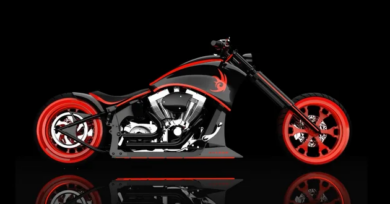ATV – Promoter Scores with ATVs on NHL Ice
Promoter Gary Densford found a way to put ATVs and powersports under the spotlight without skating on thin ice. With the recent National Hockey League season a waste and the owners in lockout mode, something had to be done about utilizing empty NHL arenas. Enter Densford and his South Carolina-based International Championship Events (ICE) series. The ice-racing pioneer saw the empty hockey rinks as an ideal opportunity to grow his indoor race series.
The ICE Championship series made its official powersports racing debut January 13, 1977, at the Oklahoma State Fair Coliseum. Among those participating was Densford.
In 1985, the ICE Speedway Trike and Quad Divisions were created. Despite popularity with the spectators, only one of these classes survived the cut. ICE officials said insurance liability problems forced the destruction of the three-wheeled class later that season while quads grew into their own premier racing division.
The first ICE Quad National Champion was crowned in 1986 and the first World Champion in 1990.
Nine events made up the 2005 series. The 2005 series started December 18, 2004, at the Everett Events Center
in Everett, Wash., and visited St. Paul, Minn.; Loveland, Colo.; Aberdeen, S.D.; Tucson, Ariz.; Las Vegas; Ottawa, Ontario, Canada; and Trenton, N.J., before ending February 26 at the MCI Center in Washington, D.C.
Speedway motorcycles, flat-track motorcycles, ATVs and speedway karts all circle the thick oval ice sheet. Each type of machine is part of the four professional divisions of ICE/WSRA and compete for World Championship Titles at the end of the season.
RACING FORMATS
The ICE crew developed a class structure for its quad series. Aside from three main classes, the series is also open to true rookies.
ICE Unlimited Outlaw Quad Division — the pro class — features highly modified ATVs designed specifically for oval track ice racing. For quad builders, the ICE series allows any engine or chassis configuration as long as the machine is rear-wheel driven and no wider than 50 inches. Normally, this class consists of the touring racers, but ICE says the class also is open to locals.
The ICE Breakers class also is open to almost any quad, and ICE says approximately 95% of the talent in this class comes from local racers running a single event. Competitors are allowed only 100 of the 5/8-inch studs.
Considered a finesse class, the Unstudded class is arguably the most intriguing. This class usually finds itself facing in opposite directions due to the slick conditions. The legit racers have found a way to cleverly tip-toe across the ice. That’s not an easy feat, especially with a torquey four-stroke.
Two lower classes target local riders racing for trophies.
SETUP
But how does one go about transforming an NHL rink into an indoor haven for ATV and motorcycle racing?
To prepare an NHL arena for the ICE series, the rink’s ice thickness goes from one inch – NHL regulation – to at least three inches. The ice has to be thicker to withstand the constant pocking created by the ice studs from the various machines’ tires. The studs give the vehicles traction and keep them on the track and off the rink boards.
As each heat of quads rolls out onto the ice, they proceed to a designated “traction testing” location. Racers are afforded one traction-testing launch with their ATVs on this section of the ice. Then, it’s off to the starting line.
Next year, ICE celebrates its 30th anniversary.
For more information about International Championship Events, call 843/234-2777 or visit www.icespeedway.com.
— Ken Thompson, Contributing Writer




